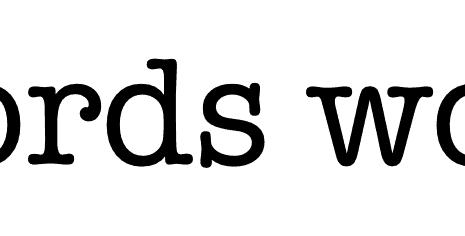
Do you speak your audience’s language?
When your message offers people a benefit, they want to make sure they understand what you’re saying.
Plain words reach a bigger audience
Always speak your audience’s language, so your message is easy to get. Only about 1 out of 4 marketers speaks the language of their audiences and decision-makers, according to a Forrester study, “Customer-Centered Messaging Motivates Buyers to Act.”
So, when you speak to your audience in words that are familiar to them, you leapfrog ahead of 3 out of 4 competitors.
In many fields, it’s way too easy to talk over the heads of audiences. Here are 3 traps to avoid:
- Jargon speaks the language of a specialized field. But if members of your audience do not know the field, avoid jargon. For example, should a doctor tell a patient that he had a myocardial infarction? Or a heart attack?
- Acronyms are abbreviations, in which the initials are pronounced like a word. For example, FOMO (fear of missing out). OK to use if everyone knows it, but it may be problematic if your audience includes older generations.
- Initialisms are abbreviations, in which each initial is pronounced out loud (such as FBI, USA, and IP). If everyone knows the initialism, it’s ok to use.
If everyone in your audience gets your meaning, it’s ok to use jargon, acronyms, and initialisms.
Even newbies need to understand
If there’s even one newbie in the room who might get confused by jargon, acronyms, and initialisms, take these steps:
- Define unfamiliar terms the first time you use them, in plain words everyone understands.
- Spell out what acronyms and initialisms stand for, since one abbreviation may convey many different meanings.
Why? Because many terms carry multiple meanings, even inside one field. For example, to most people an ATM is an automatic teller machine. But:
- In meteorology, ATM means atmosphere.
- In transportation, ATM means air traffic management.
- In computing and telecom, ATM means asynchronous transfer mode.
- In medicine, ATM means awareness through movement.
- In astronomy, ATM means Apollo telescope mount or amateur telescope maker.
- In a text message, ATM means at the moment or across the miles.
When your audience is 100% doctors, speak to them in medical terms. If your audience is 100% engineers, speak engineering to them.
But avoid speaking in specialized languages that some people in your audience may not know. What you say sails right over their heads. Your meaning may not land with them.
It’s prudent to be extra-careful
For example, don’t speak engineering to the chief financial offer who speaks the language of finance … or vice versa.
When members of your audience live and work outside English-speaking countries, try to speak the local language whenever possible.
If that proves impractical or unaffordable, limit your English vocabulary. When you speak global English, you can be understood by a larger global audience that includes the 375 million people who learned English as a second language.
The more limited your vocabulary, the bigger the audience who will grasp your meaning.
Simple words enlarge your audience

A limited vocabulary expands your addressable audience. Here’s how:
- After Dr. Seuss wrote The Cat in the Hat with a vocabulary of just 236 words, his publisher Bennet Cerf bet him he couldn’t write a book using even fewer words. Suess won that bet by writing Green Eggs and Ham, which uses a vocabulary of only 50 words. Dr. Seuss’ bestselling books have sold millions of copies and delighted kids for generations.
- How simply can you explain science and technology? Randall Munroe’s book, Thing Explainer, Complicated Stuff in Simple Words, sheds light on complex science and technologies while using a vocabulary of only 1,000 words. In the book, the International Space Station becomes a “shared space house,” thoroughly explained with detailed drawings, text, and short captions. Human cells are “tiny bags of water you’re made of.” This book makes the wonders of science super-accessible to kids, people who speak English as a second language, and even sophisticated audiences who prefer plain words that save them time.
- Global brands reach bigger audiences when they use a limited vocabulary. That’s why the Voice of America (VoA) uses a simple global English vocabulary. VoA reaches its huge audience by speaking with a vocabulary of only 1,500 words.
- When you write for a global, technical audience, start with the VOA’s vocabulary, then add a small set of words that are essential to know and use in your field.
Limiting the size of your vocabulary has another benefit. It often improves the readability of your text – which also increases the size of your addressable audience.

Use universal analogies and avoid analogies that don’t travel well
One last tip: make sure your audience understands the analogies you use. Choose analogies that translate across cultures, such as balance, transformation, or container.
Avoid analogies that don’t cross cultural barriers. In the US, avoid cricket analogies. In Europe, avoid baseball analogies.
Even when analogies use simple words, people who don’t understand your cultural context (cricket or baseball) will not grasp your intended meaning.
Here’s more on how to expand your global audience by using global English.




